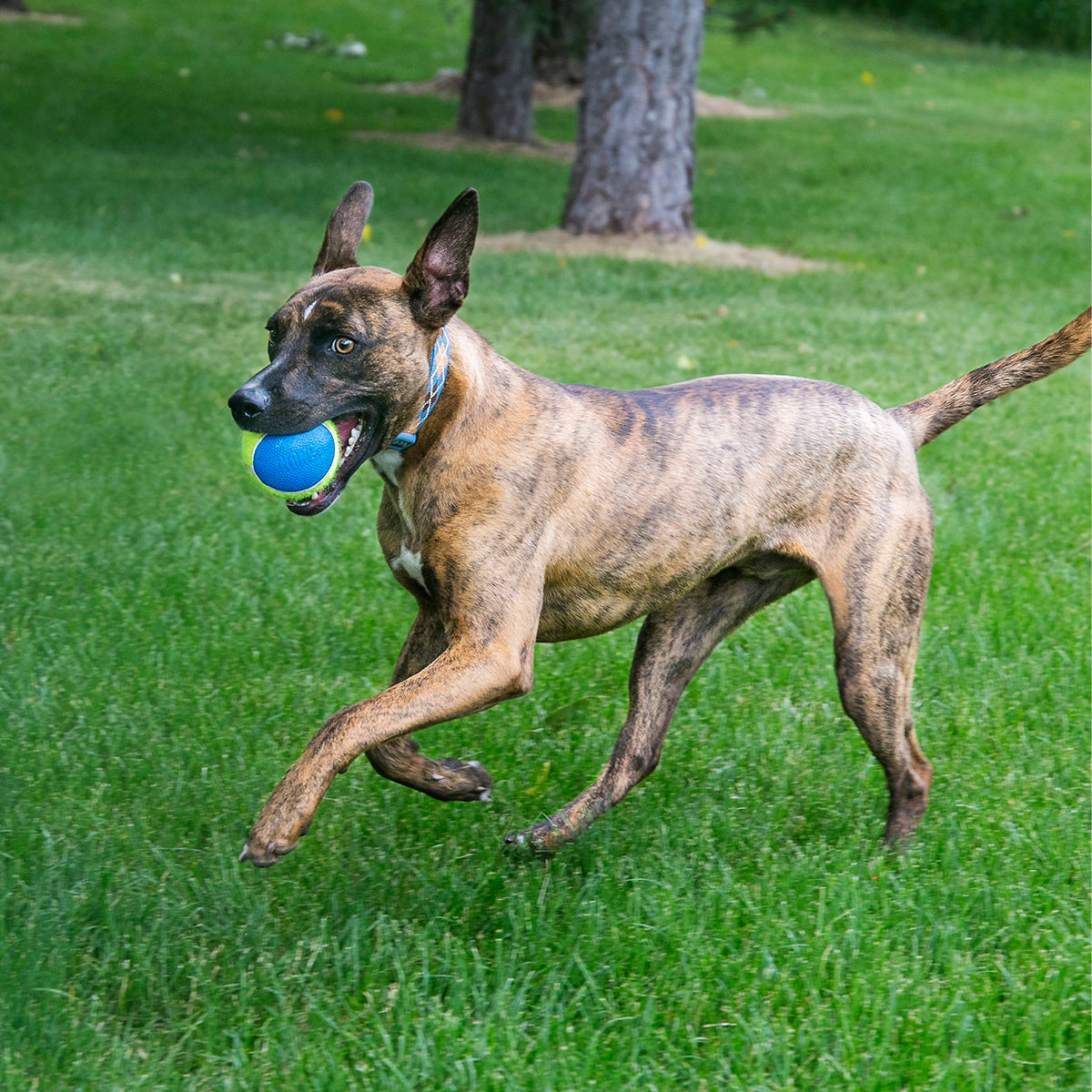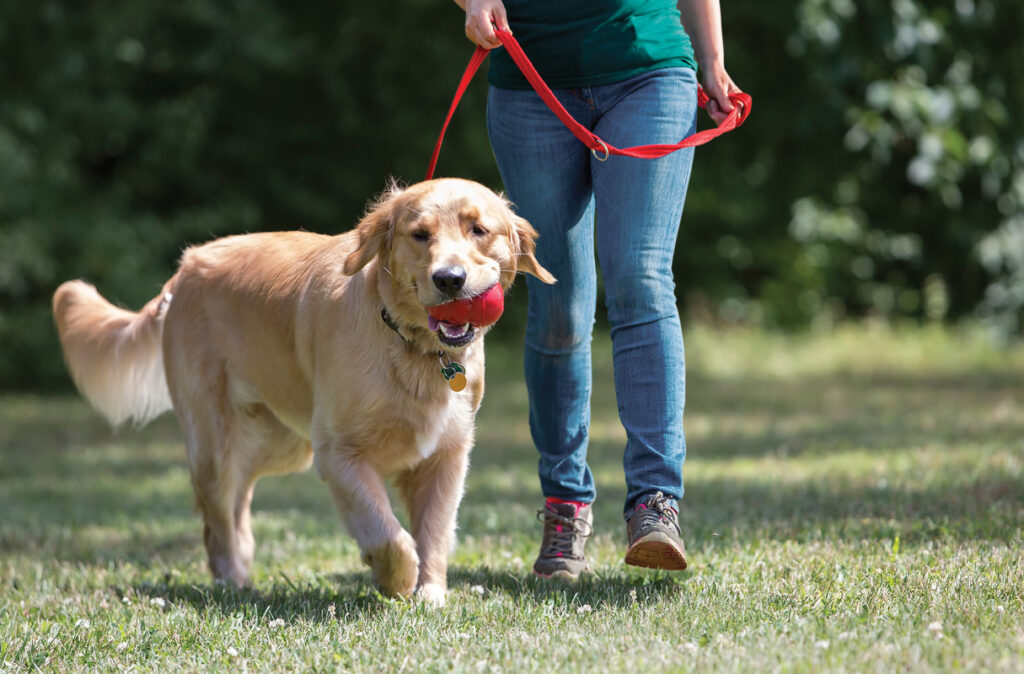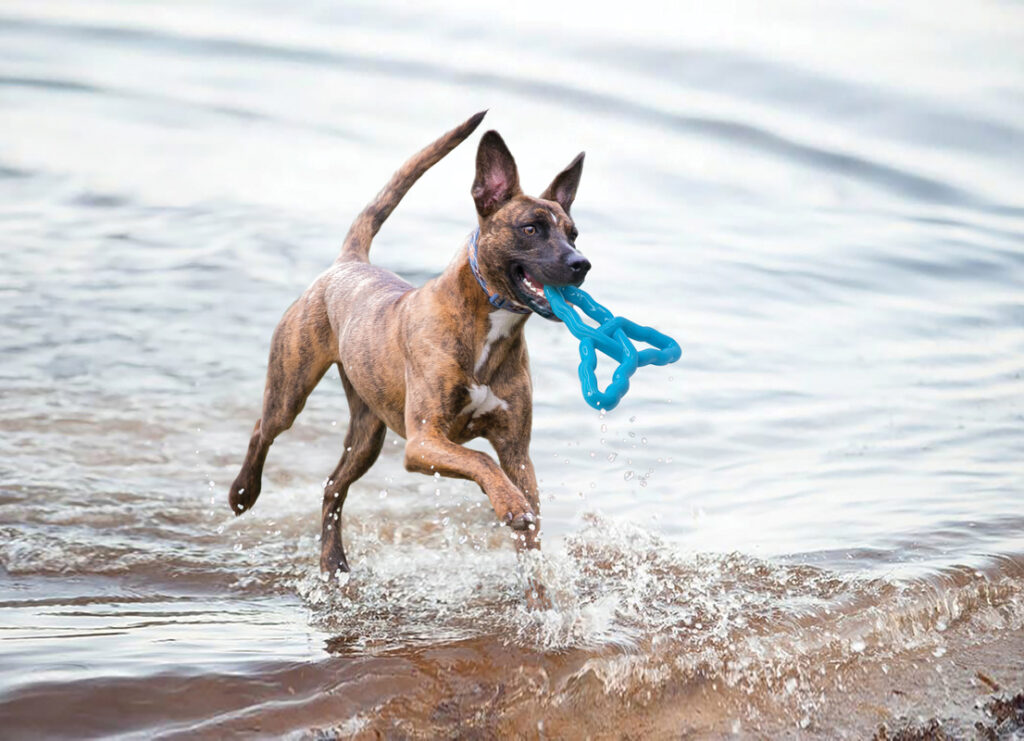Playtime is a key component of your dog’s mental and physical health. But did you know that some toys are better for certain dogs than others? So when you were cruising down the toy aisle at the pet store and tossed whatever you thought was cute or interesting into your cart, you may not have been choosing something that was in your dog’s best interest. Well, we don’t mean to toot our own horn, but at KONG Club, we’re all about helping pet parents find the best toys based on their pet’s preferred playstyles. Learn how to identify your dog’s style so that you can be sure to customize their playtime to fit their exact needs and preferences. Trust us: they’ll be happier — and so will you.
The importance of understanding your dog’s play style
Chances are that you’ve already picked up on some of your dog’s playtime habits, but the right toys can help your dog use their natural instincts, address behavioral issues, support a training or socialization program, decrease anxiety, increase activity levels, and make your pooch happier in the long run!
What type of furball do you have?
Tuggers and Chewers
If your dog is chewing your furniture and shoes more than its toys, it’s likely that they are not playing with the right ones! Dogs who love to tug and chew need durable toys that also protect your pooch’s teeth. If your pooch chews through every toy, select Extreme Chewer toys from KONG. Work with your pet coach in the KONG Club app to learn how to help your dog use their chewing instinct without destroying your shoes and furniture!
The Cheerleader
Just like a cheerleader, this dog likes to support those at play by drawing attention (barking, in this case) but without necessarily joining the action. While the barking is coming from a place of excitement, it can be disruptive if it’s perpetual. Hook up your furry noise maker with toys that help them bark in a healthy manner while keeping their mouth more occupied to boot.
Self-Play/Soft Touch
Even dogs need a little alone time and personal space, but that doesn’t mean they should forgo playtime. The difference is that they need toys that help keep their attention and create a positive association when they are on their own—whether that’s by choice or it’s because they are being crate-trained.
Adaptive
No matter the time or place, nothing can stop this dog from playing due to their adaptive nature. Nothing except boredom, that is, which can happen if they are not constantly entertained. Puzzle toys that provide mental and physical stimulation are best for the go-getter pup, lest they’ll soon be rummaging around your trash can.
Senior
It’s natural that senior dogs slow down with age, so playtime becomes less frequent and/or in shorter spurts. Unfortunately, this can lead to weight gain which is why it’s still important for your hound to get some physical activity through play. The best pet toys for dogs in their golden years are designed to increase exercise and simple functional movement to prevent overly stiff joints.
Different Types of Dog Toys
Now that you have a better idea of the different types of play styles, let’s explore the most popular pet toys for dogs.
- Plush Toys: Be careful. Dogs can become extremely attached to this type of toy so don’t let it get lost under the couch or at the dog park! One of the most desirable aspects of plush dog toys is that they are soft, which means they won’t damage your dog’s teeth or mouth. They can be found in an array of shapes, sizes, and materials and are a great choice for puppies, gentle chewers, and cuddlers.
- Squeaker Toys: While not every dog loves a toy that squeaks, the ones that do seem to be obsessed with them! It’s believed that pups love these dog squeaker toys because it triggers a wild instinct from their ancestors to catch and kill small prey. With that said, don’t be surprised if they stop playing with it once the squeaker goes silent.
- Fetch Toy: Fetch is one of the best ways you can amp up your dog’s fitness levels while strengthening the bond between human and hound. The best dog fetch toys can be something as simple as a frisbee or ball (invest in the launcher while you’re at it!) to something more stimulating like a toy that soars through the air but stores treats, too—this is a great option if you’re training or socializing your pooch. If your dog loves the water, opt for a lightweight toy that floats.
- Tug Toys: Contrary to what you may have heard, playing with tug toys can help your dog build confidence, provide mental and physical stimulation, and help expel pent-up energy. Fun fact: A game of tug of war is considered a reward for canine athletes (think dog racing) and K9 police dogs. Look for dog tug toys like a good, old-fashioned rope toy, but discard if it starts to fall apart as the strings can get caught in your dog’s intestines. Other options include rubber handle tug toys that protect your pup’s teeth and stuffed toys for smaller dogs with a lighter “tug.” Keep in mind that while tug toys won’t make your dog aggressive, they can exasperate combative tendencies if they are already present, so opt for a different toy if that’s the case.
- Puzzle/Interactive Toys: Think of dog puzzle toys like brain teasers that help stimulate their mind, develop instincts, banish boredom, prevent anxiety, and even prevent dementia. These toys can be physical (some even dispense treats), but the more sophisticated versions are electronic and boast features such as lights, sounds, and even the possibility to connect with Bluetooth.
- Chew Toys: This versatile toy comes in a variety of sizes, colors, textures, and shapes. Since different dog chew toys have different levels of durability, choose the right toy based on how powerful of a chewer your pooch is, as well as the current state of their teeth.
KONG Club 1:1 Training
Our KONG Club trainers are here to support you throughout your pet parent journey! Click HERE to get started.



